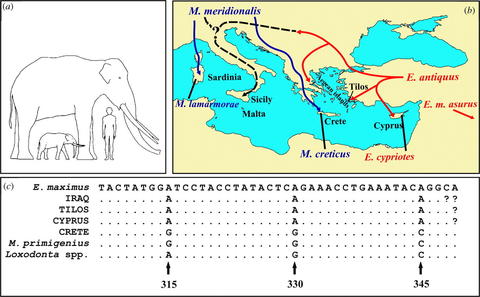
During the Pleistocene pygmy elephantids, some only a quarter of their ancestor’s size, were present on some Mediterranean islands until about 10,000 years ago (y.a.) Using a whole genomic amplification method we were able to retrieve DNA fragments from 4,200 to 800,000 y.a. samples from island and mainland pygmy and normal-sized forms. Our results challenge the prevailing view that pygmy elephantids of the Mediterranean originated exclusively from Elephas, suggesting independent histories of dwarfism and the presence of both pygmy mammoth and elephant-like taxa on the eastern Mediterranean islands. When a new ancient DNA sequence is retrieved, it is often claimed that it will rewrite the textbooks of the organism it came from-this holds true for this study. This work was in collaboration with Scott Glaberman, now Assistant Professor at University of South Alabama, Nikos Poulakakis from the Natural History Museum of Crete, David S. Reese from the Yale Peabody Museum, and scientists from the University of Crete and the Crete Natural History Museum.
Publication: Poulakakis, N., Parmakelis, A., Lymberakis, P., Mylonas, M., Zouros, E., Reese, D. S., … & Caccone, A. (2006). Ancient DNA forces reconsideration of evolutionary history of Mediterranean pygmy elephantids. Biology letters, 2(3), 451-454.